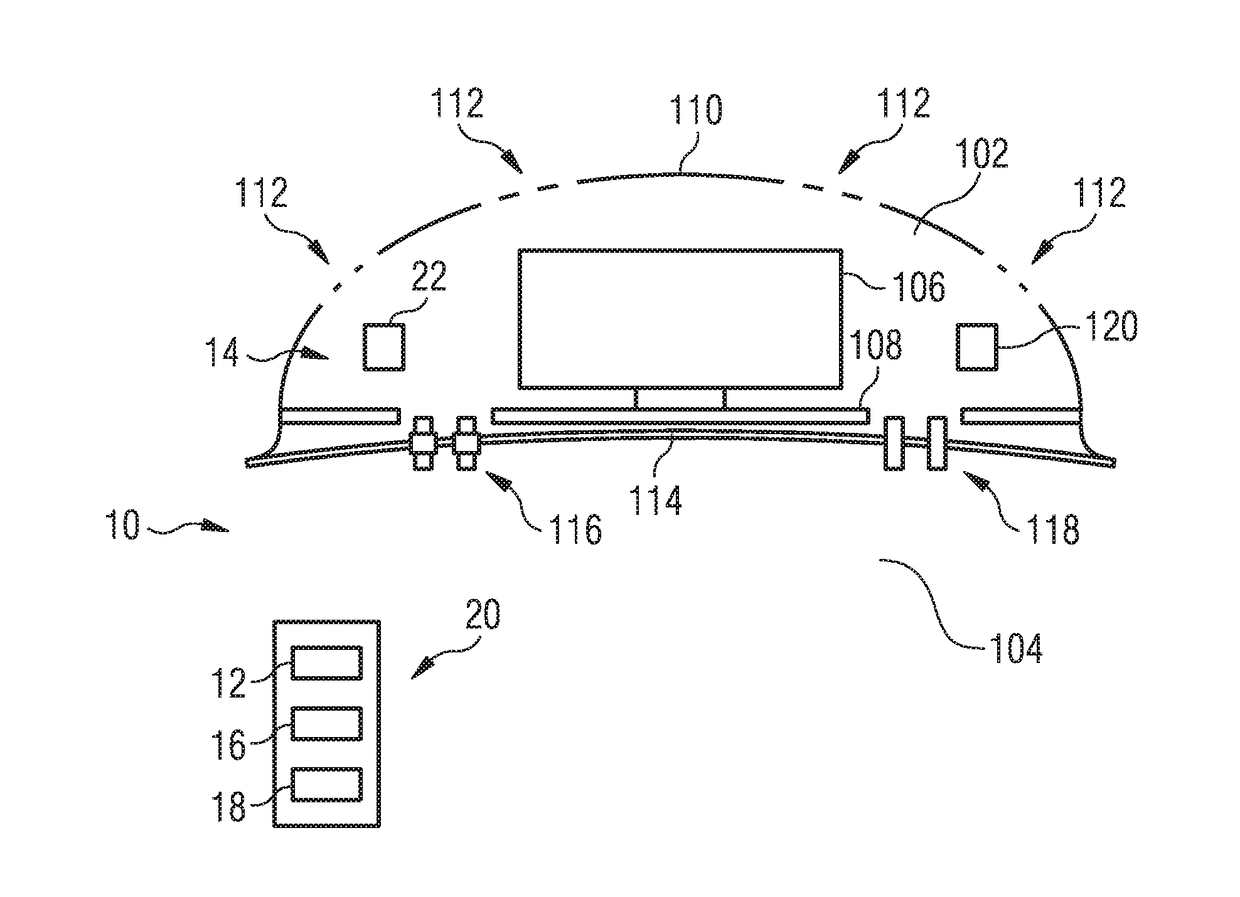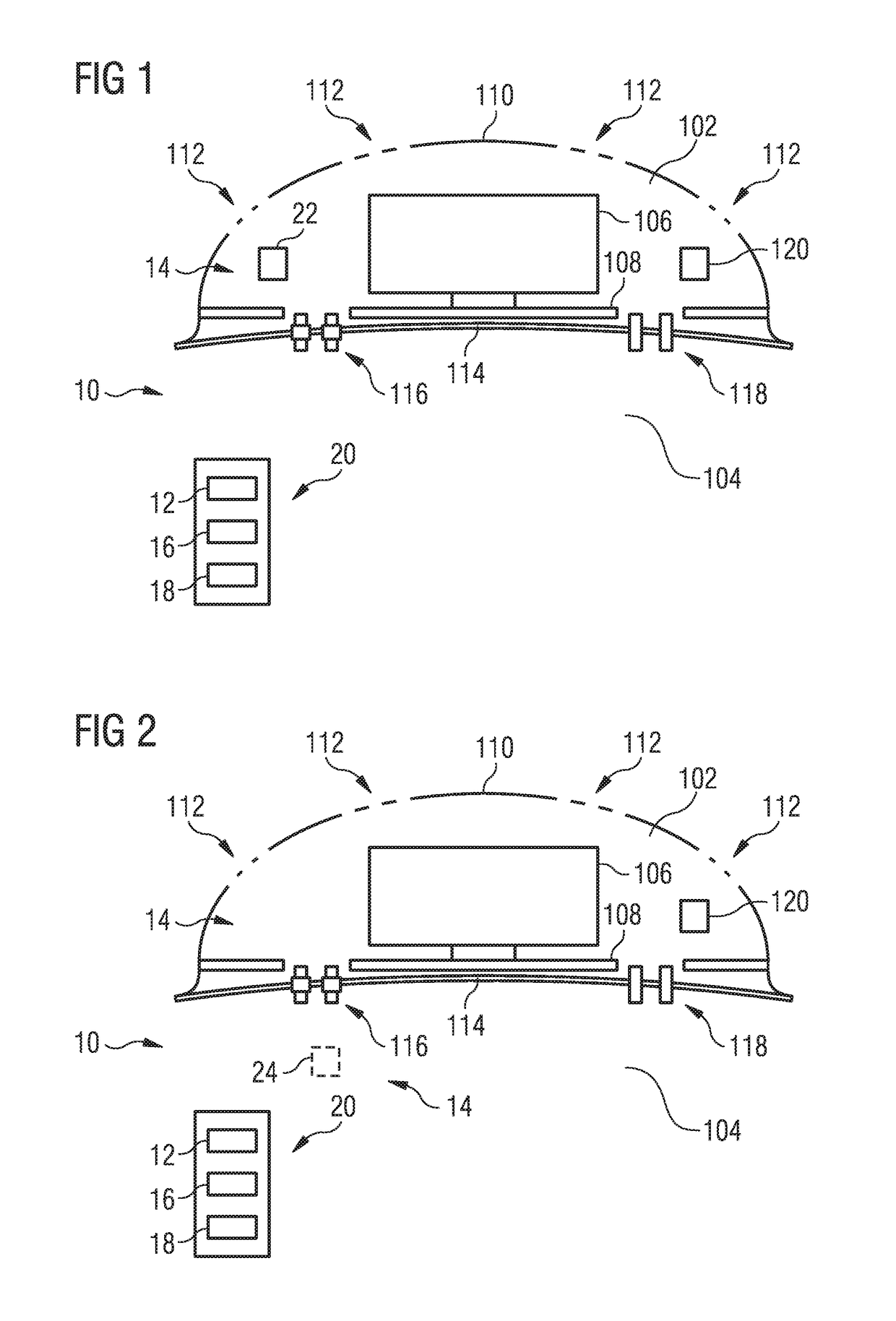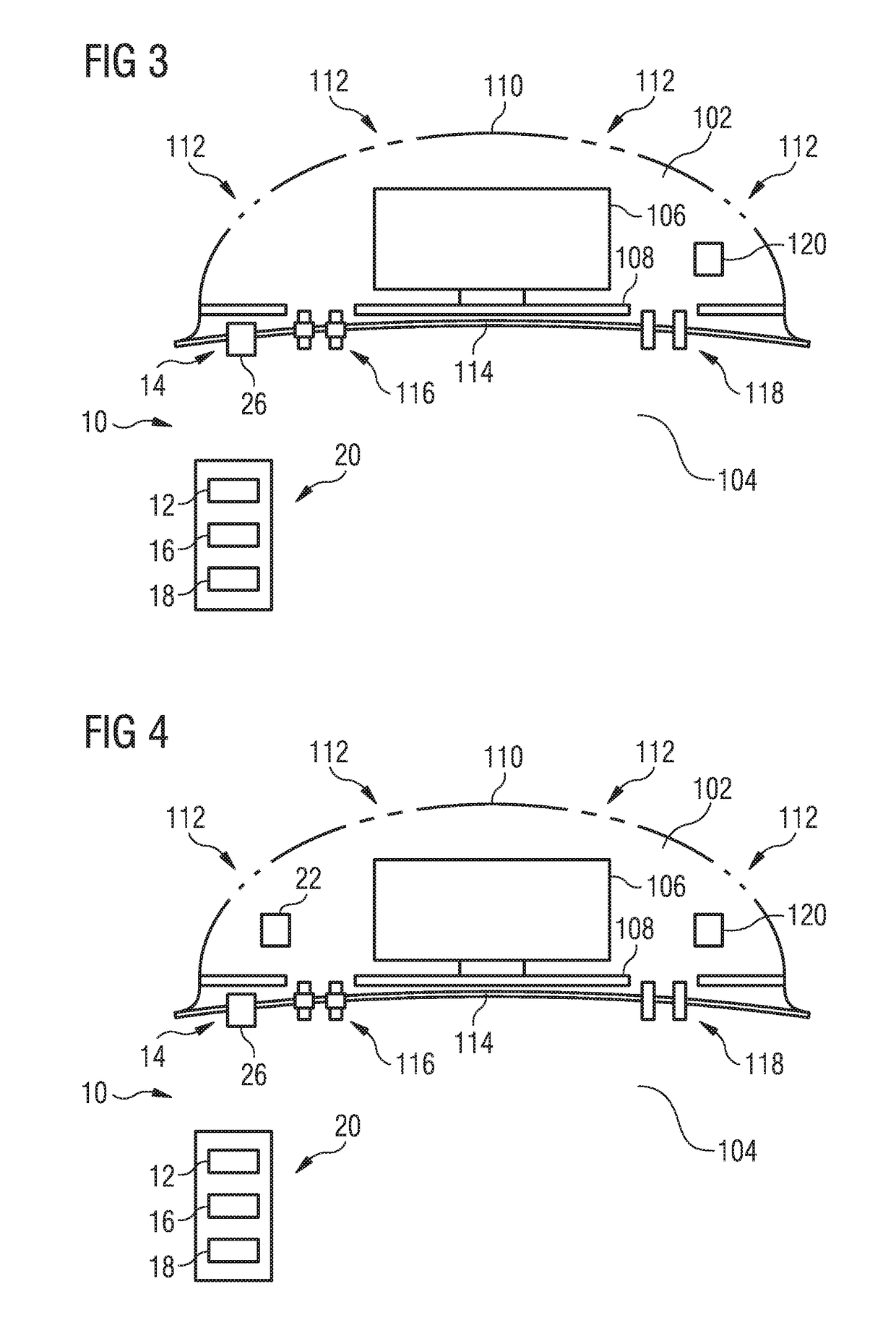Method and system for detecting damage to components of an aircraft
a technology for aircraft and components, applied in the direction of instruments, measurement of fluid loss/gain rate, transportation and packaging, etc., can solve problems such as decompression of a pressurized area of aircra
- Summary
- Abstract
- Description
- Claims
- Application Information
AI Technical Summary
Benefits of technology
Problems solved by technology
Method used
Image
Examples
first embodiment
[0044]In the system 10 shown in FIG. 1, the recording device 14 comprises a first absolute pressure sensor 22 arranged in the unpressurized first area 102, which sensor measures the actual pressure pactual1 in the unpressurized first area 102. The measured value recorded by the first absolute pressure sensor 22 and characteristic of the actual pressure pactual1 in the unpressurized first area 102 is transmitted to the comparison device 16 as actual pressure parameter. The comparison device 16 also receives from the determination device 12 as a theoretical pressure parameter the theoretical pressure ptheo1 in the unpressurized first area 102, which is determined by the determination device 12 on the basis of a measured flight altitude of the aircraft. The altitude of the aircraft is measured by a GPS system 120, which is provided anyway in the unpressurized first area 102 in the form of a radome.
[0045]The comparison device 16 compares the theoretical pressure parameter transmitted to...
second embodiment
[0046]the system 10 illustrated in FIG. 2 differs from the arrangement shown in FIG. 1 in that, instead of a first absolute pressure sensor arranged in the unpressurized first area 102, the recording device 14 comprises a second absolute pressure sensor 24, which is arranged in the pressurized second area 104 and measures the actual pressure pactual2 in the pressurized second area 104. The measured value recorded by the second absolute pressure sensor 24 and characteristic of the actual pressure pactual2 in the pressurized second area 104 is transmitted as an actual pressure parameter to the comparison device 16. The comparison device 16 further receives from the determination device 12 as a theoretical pressure parameter the theoretical pressure ptheo2 in the pressurized second area 104, which is determined by the determination device 12, taking account of the flight altitude of the aircraft measured by the GPS system 120, on the basis of altitude-dependent reference values for the...
third embodiment
[0048]the system 10 illustrated in FIG. 3 differs from the arrangement shown in FIG. 1 in that, instead of a first absolute pressure sensor arranged in the unpressurized first area 102, the recording device 14 comprises a differential pressure sensor 26. The differential pressure sensor 26 is arranged in the region of the partition wall 114 provided between the unpressurized first area 102 and the pressurized second area 104 and measures the actual pressure difference Δpactual between the unpressurized first area 102 and the pressurized second area 104. The measured value recorded by the differential pressure sensor 26 and characteristic of the actual pressure difference Δpactual between the unpressurized first area 102 and the pressurized second area 104 is transmitted as an actual pressure parameter to the comparison device 16. The comparison device 16 further receives from the determination device 12 as a theoretical pressure parameter the theoretical pressure difference Δptheo b...
PUM
 Login to View More
Login to View More Abstract
Description
Claims
Application Information
 Login to View More
Login to View More - R&D
- Intellectual Property
- Life Sciences
- Materials
- Tech Scout
- Unparalleled Data Quality
- Higher Quality Content
- 60% Fewer Hallucinations
Browse by: Latest US Patents, China's latest patents, Technical Efficacy Thesaurus, Application Domain, Technology Topic, Popular Technical Reports.
© 2025 PatSnap. All rights reserved.Legal|Privacy policy|Modern Slavery Act Transparency Statement|Sitemap|About US| Contact US: help@patsnap.com



